Notes From Underground: LUKE NUGENT’s AI Editorials Fictionalize Subcultures
|Cassidy George
NOTES FROM UNDERGROUND is a series of investigations into the shifting definitions and manifestations of subculture in the digital age.
Luke Nugent has worked as a fashion and art photographer for 15 years and has recently captivated the internet with his AI editorials, which depict subcultures of the past and present––both real and imagined.
If Dante’s Inferno could be mapped onto the cultural sphere, the ninth circle of hell would be a white cube. There, ghoulish gallery visitors with no knowledge of art history stare at a never-ending display of contemporary artworks and say, “I could have done that” ad infinitum. The doomed artists and art professionals must run around the room shouting, “but you didn’t” for eternity.
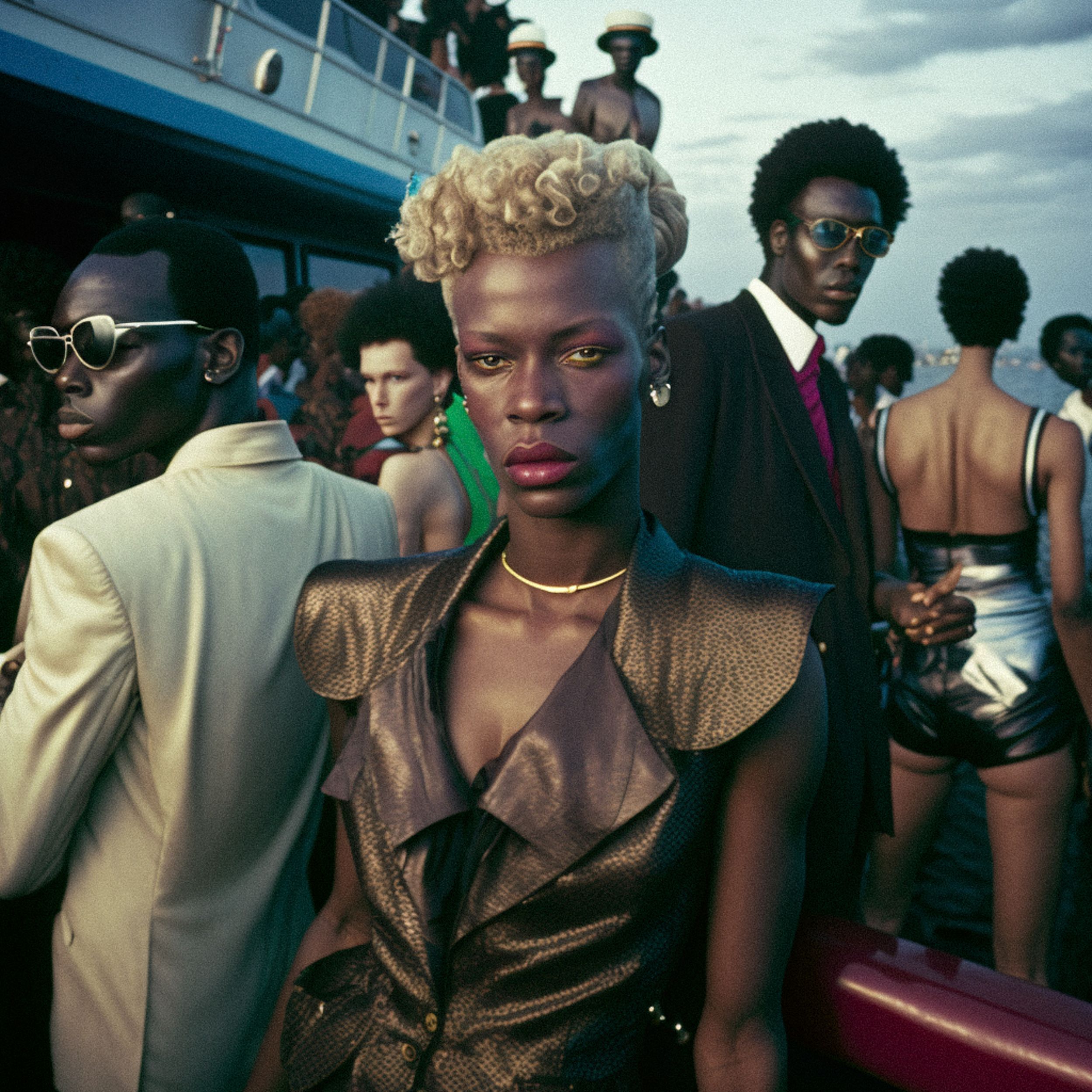
What will people look like when they can truly look like anything?
Luke Nugent is well acquainted with this particular hellscape. The “shoots” he makes using the controversial text-to-image AI software, Midjourney, have bewitched audiences and the algorithm. As the applause and client requests have come pouring in, so too, has the fury. “Someone messaged me and said, ‘My dog could do this!’ and then sent me a photo of their dog, as if to further prove their point,” Nugent shared, laughing. The best part about saying, “I can do that” in the current chapter of art history is that it can immediately be disproved. Unlike paint on canvas (can you really “scribble” like Cy Twombly?), Midjourney’s generator is instantly accessible to anyone with an internet connection. For those who feel like they are capable of creating AI artworks as evocative and beguiling as Nugent’s, I implore you: go ahead and try.
Criticism of Midjourney is warranted and essential, and Nugent is the first to admit it. Before speaking about his work, he addressed the ethical concerns with the AI program he uses, highlighting the fact that it has been trained with stolen images and that its ability to imitate individual artists’ styles gives it the potential to be the world’s most powerful plagiarizer. “I 100 percent understand and appreciate why people dislike AI. There are numerous issues with it, but the most important one is that people haven’t given permission for their work to be training the AI,” said Nugent.
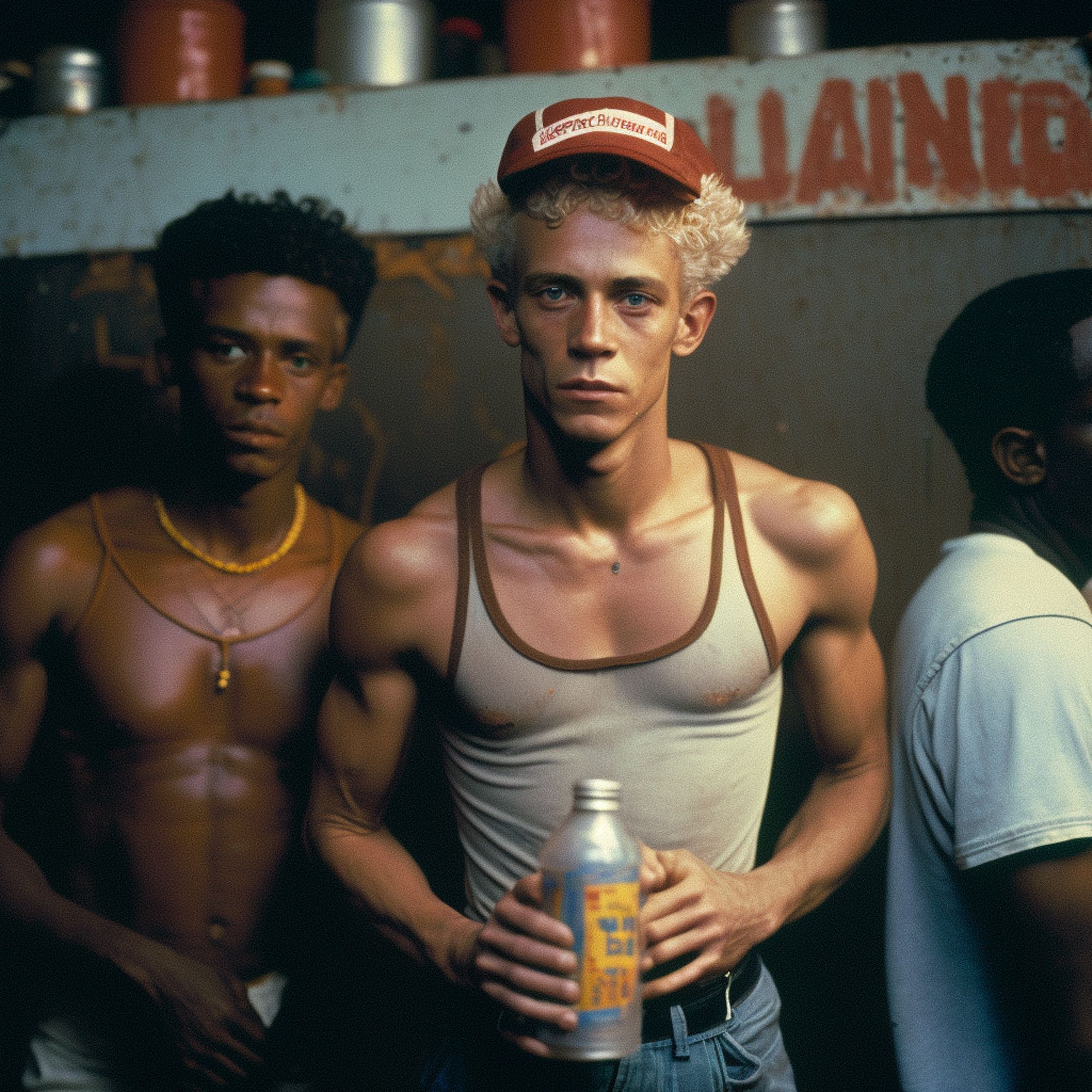
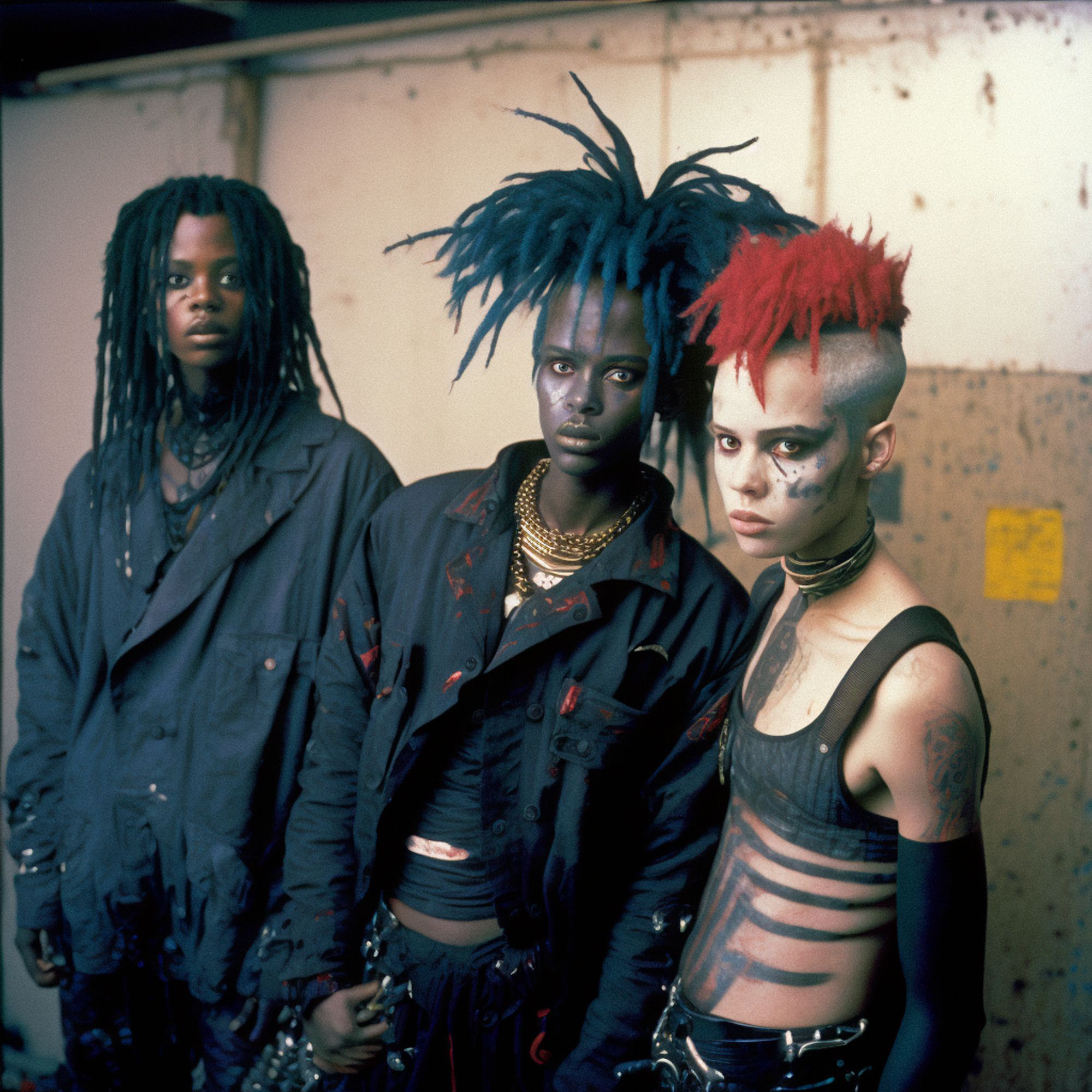
In speaking to the photographer, it became increasingly clear that Nugent never anticipated the explosive response to his AI work, which he initially approached as a personal creative experiment and with the light-heartedness of play. Given the unexpected tidal wave of interest and enthusiasm in his Midjourney work, Nugent now inadvertently finds himself to be a spokesperson and defender of the use of AI in art. He reminded me of a musician whose greatest hit was written in ten minutes. Though he went out of his way to acknowledge other points of view, he still stood his ground: “Everyone is entitled to their own opinion about AI, but you at the very least have to understand it and engage with the discourse around it. If you don’t move with this stuff, you’re going to be left behind.”
Harnessing the generative might of Midjourney is an exercise in visualization, unlocked through detailed description and imagination. When creating his AI photographs, Nugent specifies the composition, the camera angle, the pictorial style, the era, the environment, each character, their facial expressions, their outfits, and how they interact with one another. Though Nugent is one of many photographers experimenting with AI, his thoroughness sets him apart, as does his implantation of meta tropes and motifs, such as the recurring presence of screens. “By combining different ideas, places, and things that normally wouldn’t go together, you open up a new world and aesthetic,” Nugent said. “Once I’ve landed on a scene, I then think, ‘What else is happening here?’” With a script shared only between him and the generator, Nugent creates hundreds of images, which he treats like a contact sheet. He extracts a selection, edits the colors and textures to resemble film photography more closely, and then, by constructing a sequence, allows a narrative to unfold.
Nugent’s AI editorials first appeared on Instagram when social media was still weathering the storm of digital narcissism and aesthetic tragedy caused by the trending app Lensa. For 3,99 dollars, Lensa uses AI technology to turn users’ photographs and selfies into 50 “magic avatars”––its euphemism for digital characters that are hyper-Facetuned and over-sexualized. While there was no shortage of AI outrage already, the widespread use of Lensa brought regular people face to face with the prejudices of AI, which carries the bias of its programmers––equating “beauty” with lighter skin, Westernized features, and cartoonishly buxom bodies. For weeks, “magic avatars” assaulted feeds and prompted existential questions. At what point will our avatars become more important than ourselves? Hopefully not soon. What will people look like when they can truly look like anything? Hopefully not all the same. All of this helped to make Nugent’s AI work, which celebrates alternative definitions of beauty and the lifestyles of people on the margins, feel more significant.
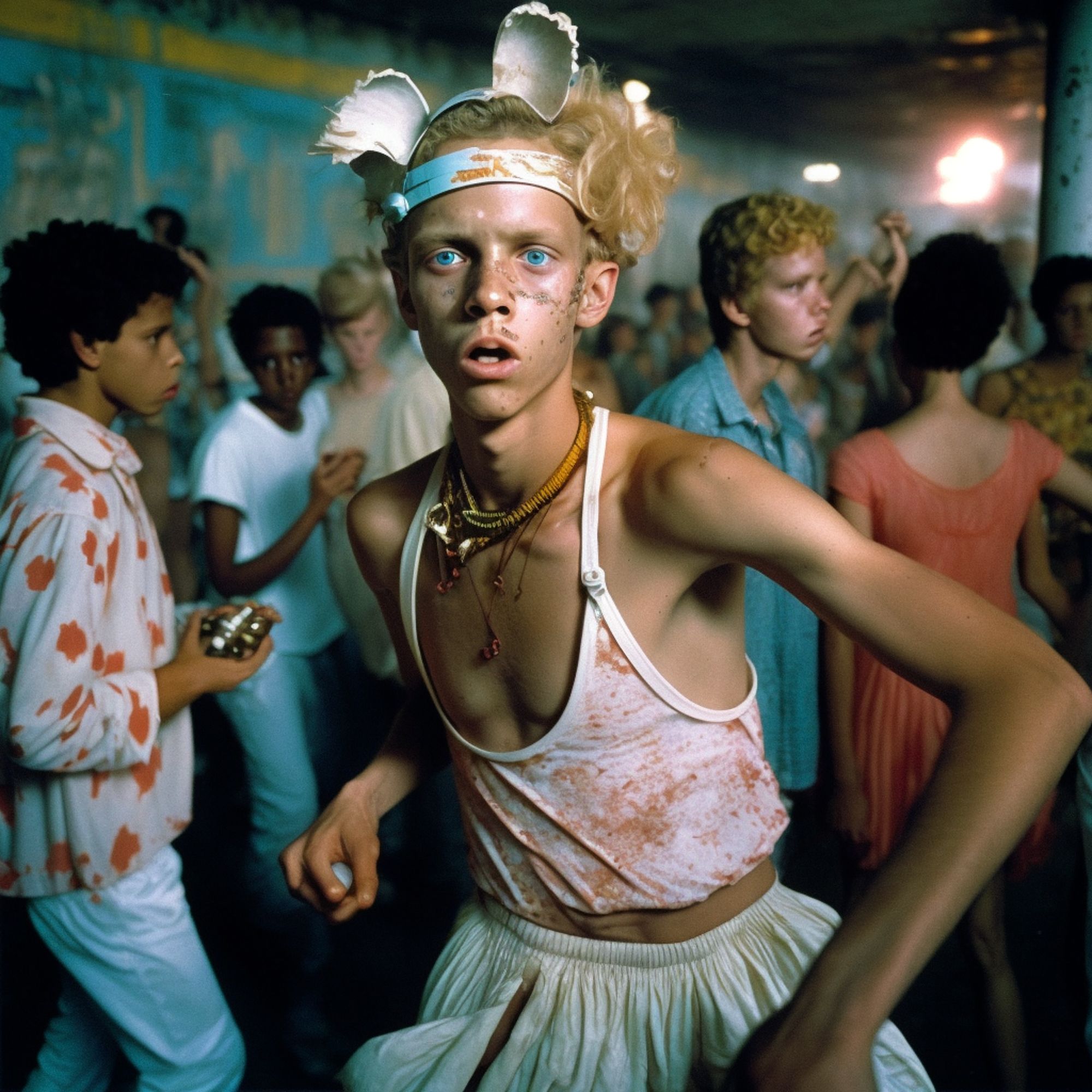
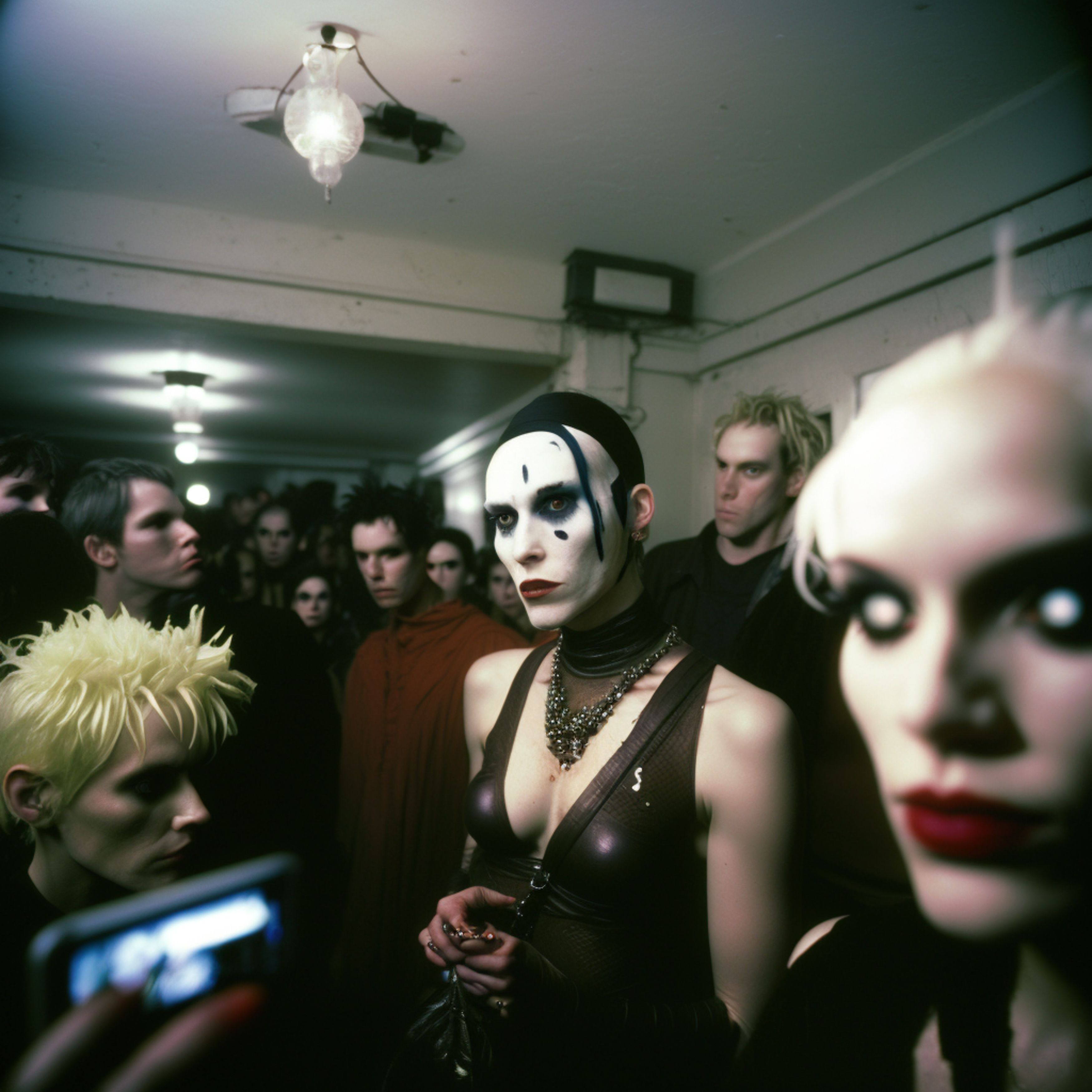
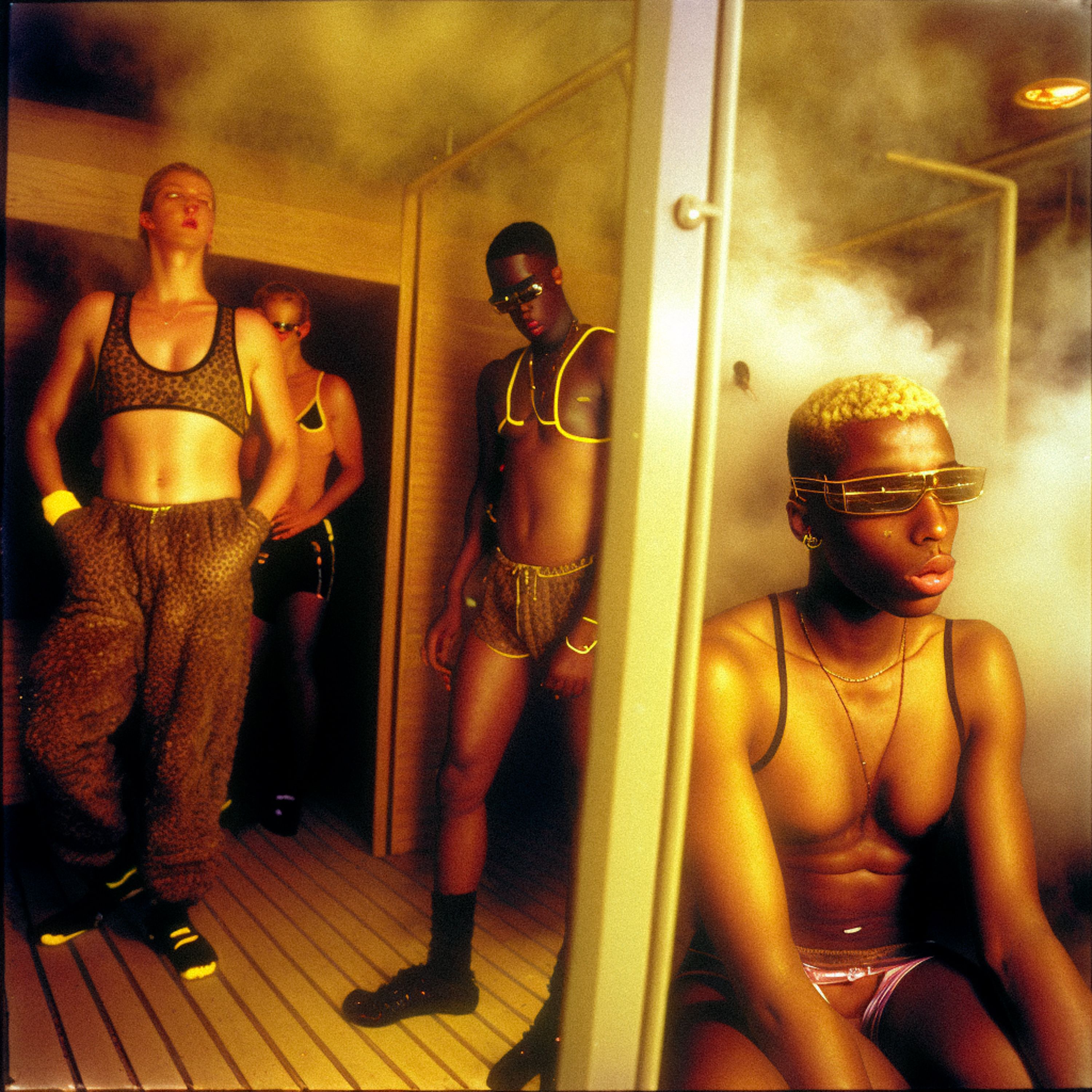
The underground is called “the underground” for a reason. Subcultures are ephemeral, often amorphous and discrete, and therefore difficult to capture. Nugent’s style and composition, which pays homage to photographers including Derek Ridgers, Nan Goldin, and Mary Ellen Mark, use the generative powers of AI to allow us to see the imagined lives of members of fringe groups and youth cultures in disarming new complexity and depth. While some works are meant to be more of a cultural history––a diverse crowd of hunky gays go clubbing in “Dalston” in the 1980s, angsty teens fraternize in the desolate streets of 1990s “Ireland”––others are more abstract and seasoned with fantasy––monsters crawl out of game screens in “A Day at the Arcade” and Japanese teens get struck by lightning in “Electrical Storm.” The images of Nugent’s fashionable avatars in a flooded, radioactive “Library” would make for a convincing Balenciaga campaign. His most recent work depicting a billboard in Times Square is an actualcampaign for Luis De Javier. His other editorials look like memories you wish were your own, depicting heated scenes from a techno party in “Sauna” and an uninhibited homage to Harmony Korine in “Gummo Rave.” Nugent says his body of work can be divided according to its approach: “I’m either thinking ‘I’ve never seen that before’ or ‘that looks like something I’ve experienced.’”
When I first saw a Nugent work, I thought I had discovered a rare new image taken at the Blitz Club, the London haunt frequented by Boy George and other members of the elusive New Romantic subculture in the 1980s. It was all there––coiffed hair, extravagant outfits with shoulder pads and neon colors, queer people with cheekbones for days, and the hollowed-out looks of white-powdered fun, elevated by the soft glow of vintage film photography. But a two-fingered zoom into the subjects quickly revealed the images’ origins. Due to their complicated geometry, AI can’t handle hands––and the finger fumbles are a dead giveaway, as is the dead gaze in the eyes. Much like Gummo, Nugent’s work is as delightful as it is disturbing, and viewers’ often delayed realization that the photos are AI-generated brings the film’s most famous line to mind: “Life is beautiful, really it is. Full of beauty and illusions. Life is great. Without it, you’d be dead.”
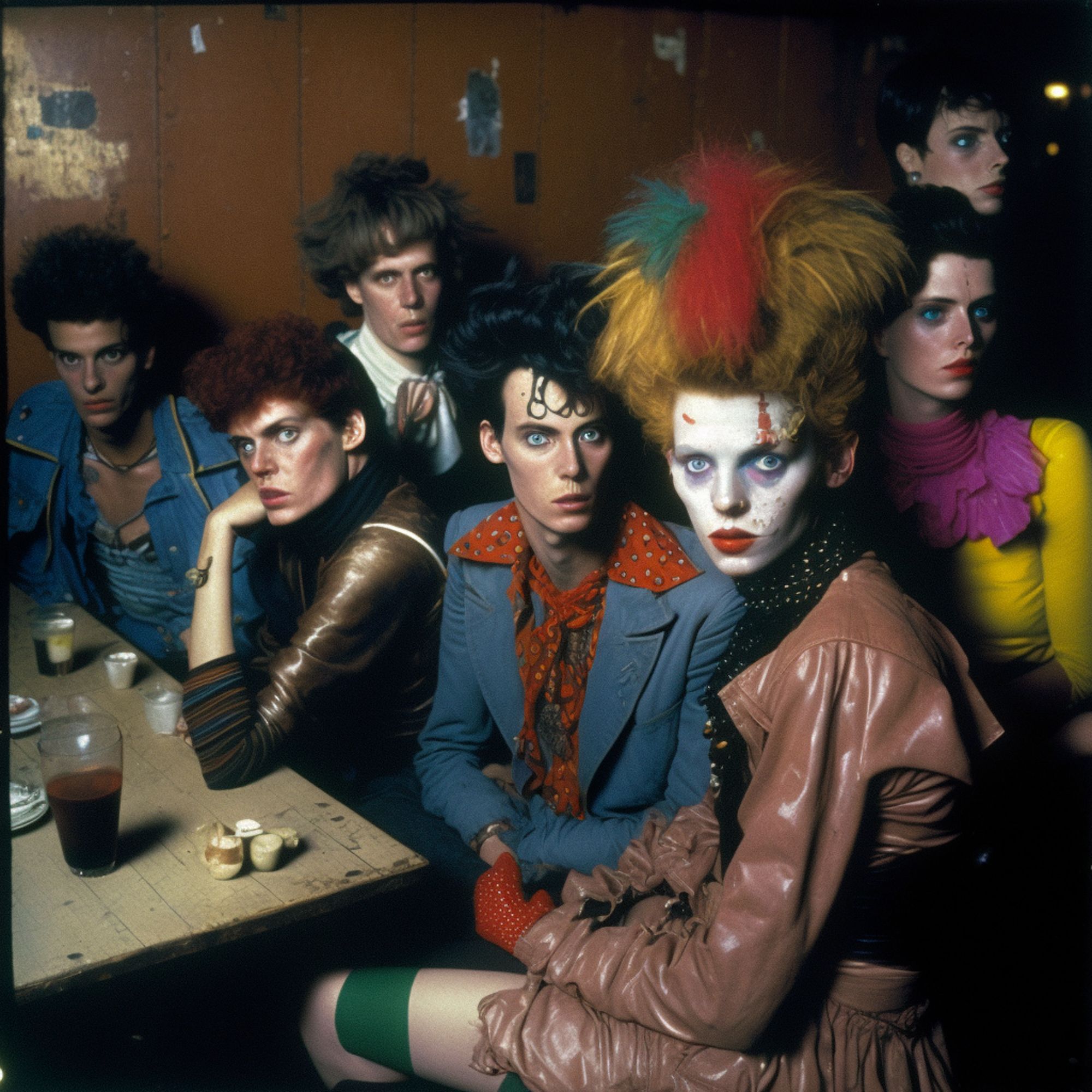
In Nugent’s personal world, subculture and new technology have always flourished in unison. “I lived in a metaverse throughout my entire teenage life,” Nugent said, referencing the years he spent gaming in the early 2000s. He poured himself into the alternate, avatar-based realities of Second Life and Runescape––and frightened his parents in the process (“Gamers” is a recreation of his own memories). As Nugent aged, MySpace rose to prominence and fueled the development of emo music and the global scene subculture, of which Nugent was a well-known member in the late 2000s. “With the birth of social media, it was a really exciting time for alternative culture in London,” Nugent said. “How you looked was a very big deal, and your pictures on MySpace were a very big deal.” Google images is still filled with evidence of his digital stardom, and his role as one of the internet’s earliest influencers paved the way for his career. “People started paying me to take their MySpace profile pictures. That was my introduction to professional photography,” Nugent said. “When you have that sort of background, you know how to make people look elevated online.”
His AI experiment at the end of 2022 was fueled, in part, by his exhaustion with the world’s (and, in turn, his commercial clients’) obsession with his own decade of subculture. “We’re so stuck in the 2000s. The briefs are always the same. Everyone is pulling from the same aspects of the past, and now everything feels so monotonous,” Nugent said. His exploration of Midjourney was equally fostered by a wave of techno-panic that overcame him during the lull of the pandemic. “A year ago, I was like, ‘I have to learn everything there is to know about crypto and NFTs because the Metaverse is coming. But then, it didn’t,” said Nugent. “Compared to AI, the Metaverse in its current incarnation is so visually unexciting to me. It’s basically The Sims. The only difference is that now you have to pay real money for your avatar to wear shitty-looking clothes,” said Nugent. When I asked if he foresees subcultures developing in the Metaverse anytime soon, he was hesitant. “I think it’s still very hard to connect with people as avatars, especially at the subcultural level. But when VR and AI combine seamlessly, that’s when things are going to get interesting.”
Compared to AI, the Metaverse is so visually unexciting to me. It’s basically The Sims.
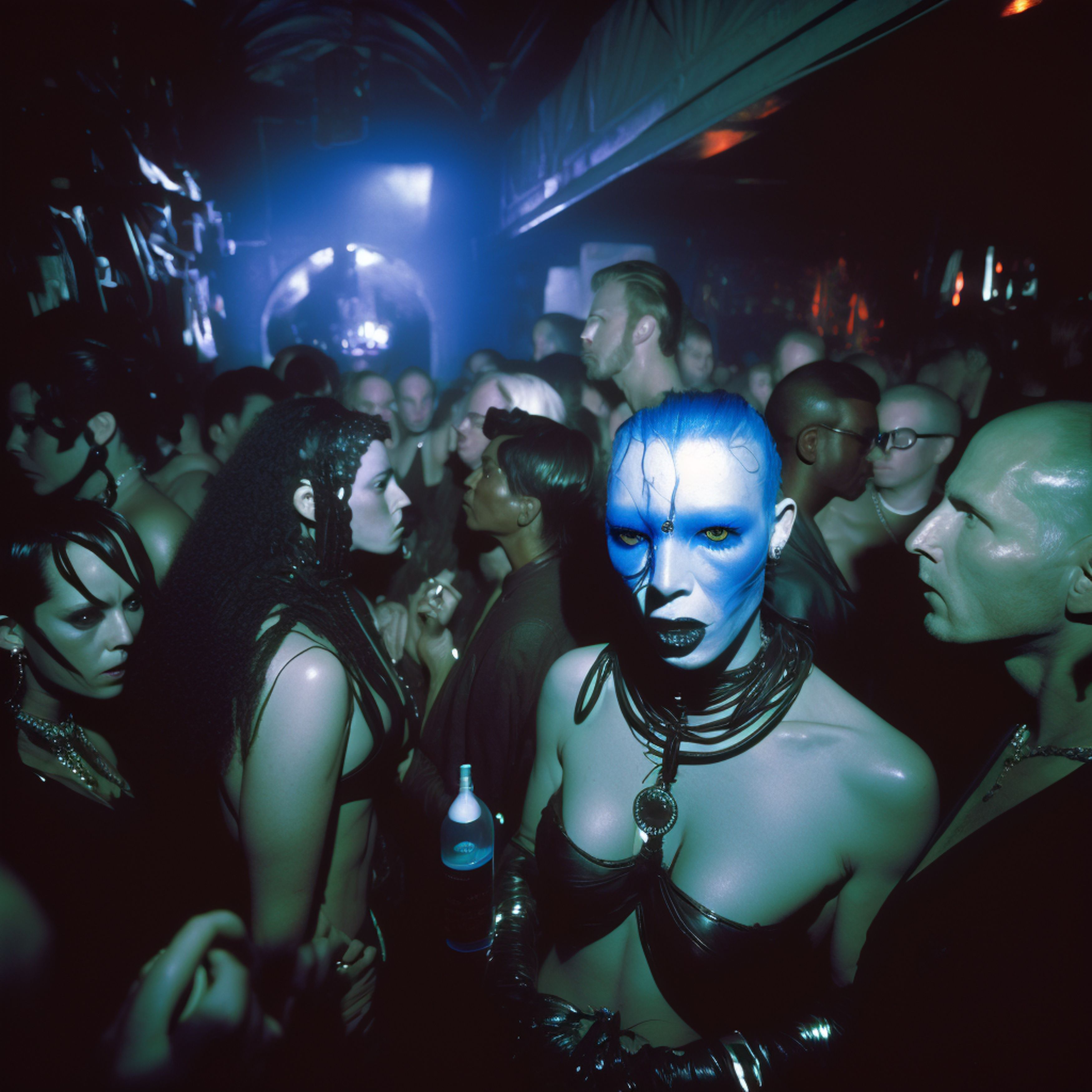
Nugent himself struggles with the concept of being an AI artist. “I’m only interested in seeing people who are already artists in their own right incorporate AI into their work, because it’s really about your perspective. Anyone can walk around their neighborhood and take a beautiful photo with their iPhone. So what? If there’s no contextual meaning or individual input, are they still a photographer?” Given the wealth of scrutiny that artists who use AI have faced in recent months, those who continue to use the tool in their work may be forming a subculture of their own. Nugent, however, is already entering a new chapter. “There are ways to integrate AI into our world without taking away people’s jobs. It's about making sure people take the time to understand it and have the skills to use it, and ensuring they are still involved in the process of production. My plan is to transition away from what I’m doing now and use AI to generate assets that I incorporate into my photography,” Nugent said.
Midjourney has opened up another creative medium for Nugent, which he will continue to nurture: the art of engaging with critics. Anyone who feels an impending sense of doom when envisioning a future with AI would benefit from bearing one of Nugent’s Instagram exchanges in mind. “AI is not a tool,” one user commented, “it is a replacement.” @lukenugentstudio replied: “not if you’re irreplaceable 💋”
Credits
- Text: Cassidy George
Related Content
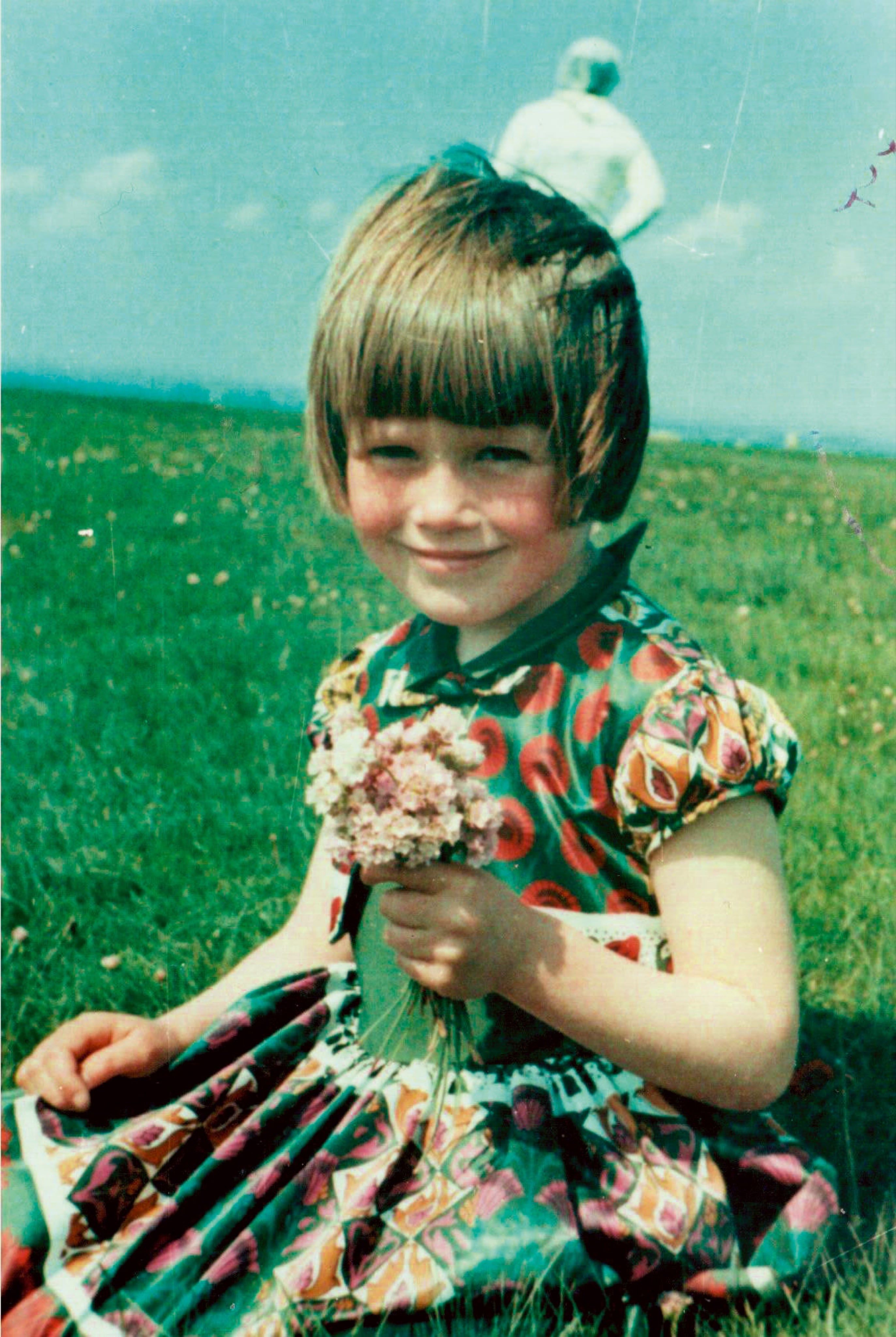
Half a Century of Civilian Sketches from the UK’s UFO Desk
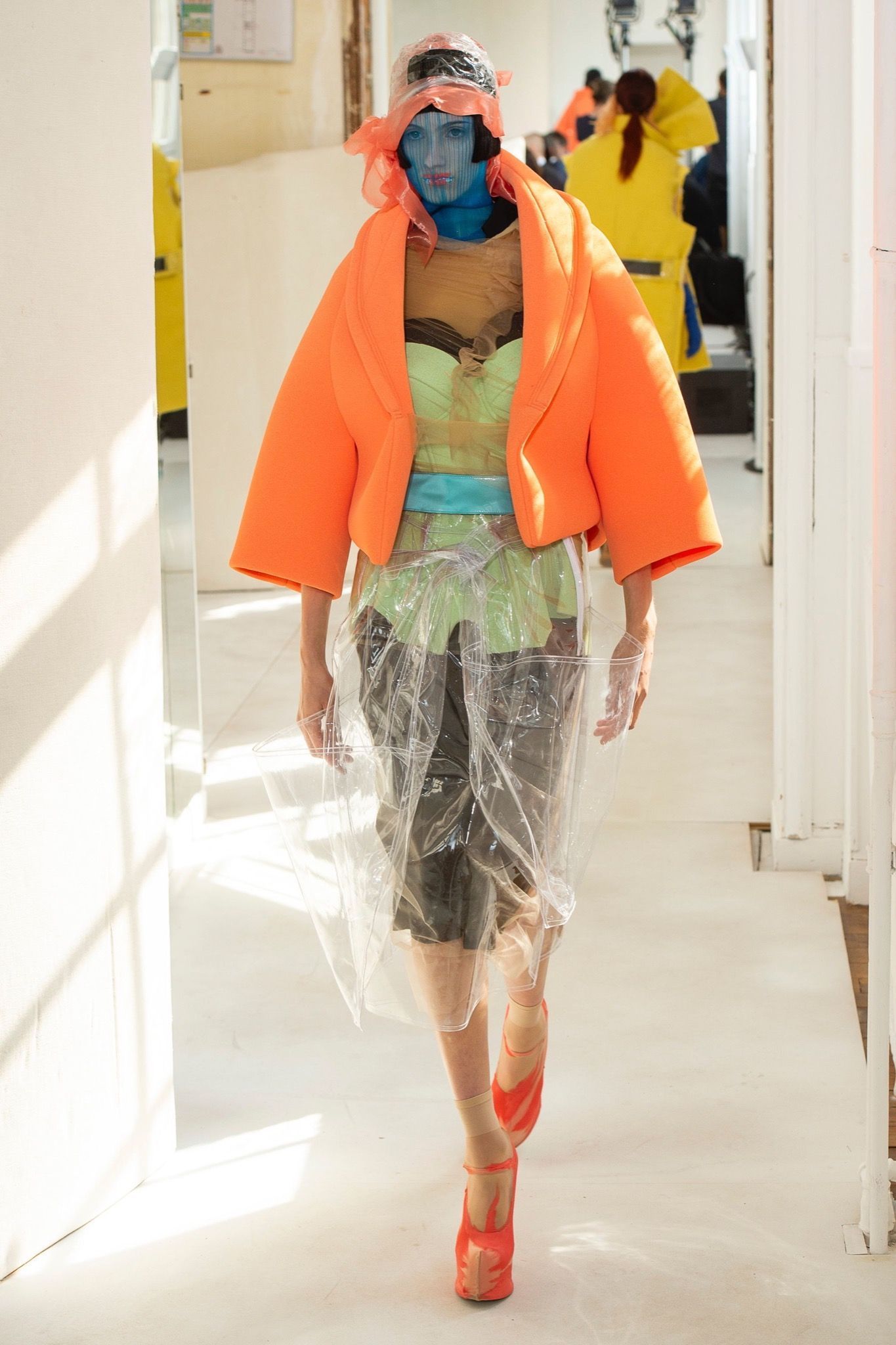
The Future of Couture: Neo-digital natives, blockchain luxury, and algorithmic customization
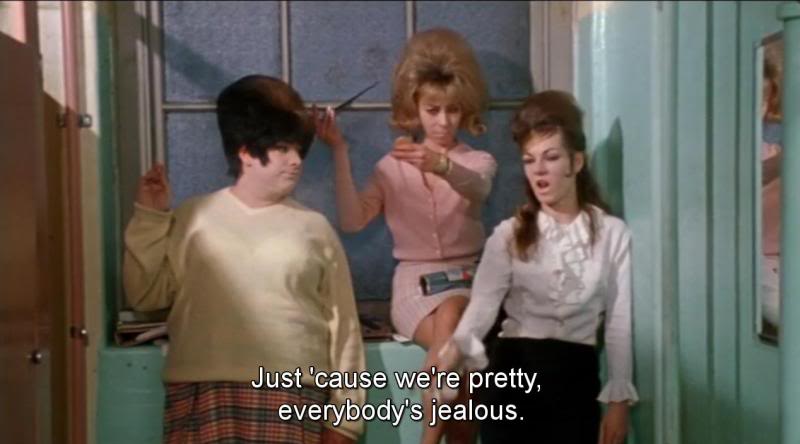
THE CURE FOR A BAD PARTY – Author CHLOÉ GRIFFIN on Underground Icon COOKIE MUELLER
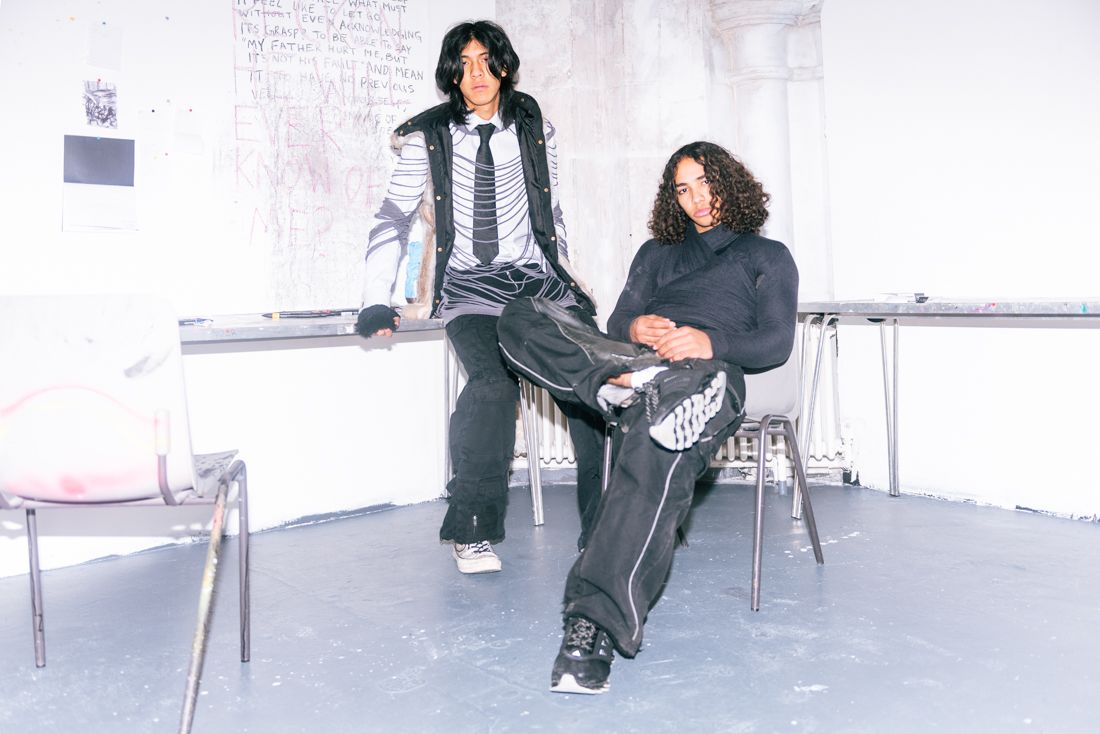
Uchronia Without Bounds: London Hardcore
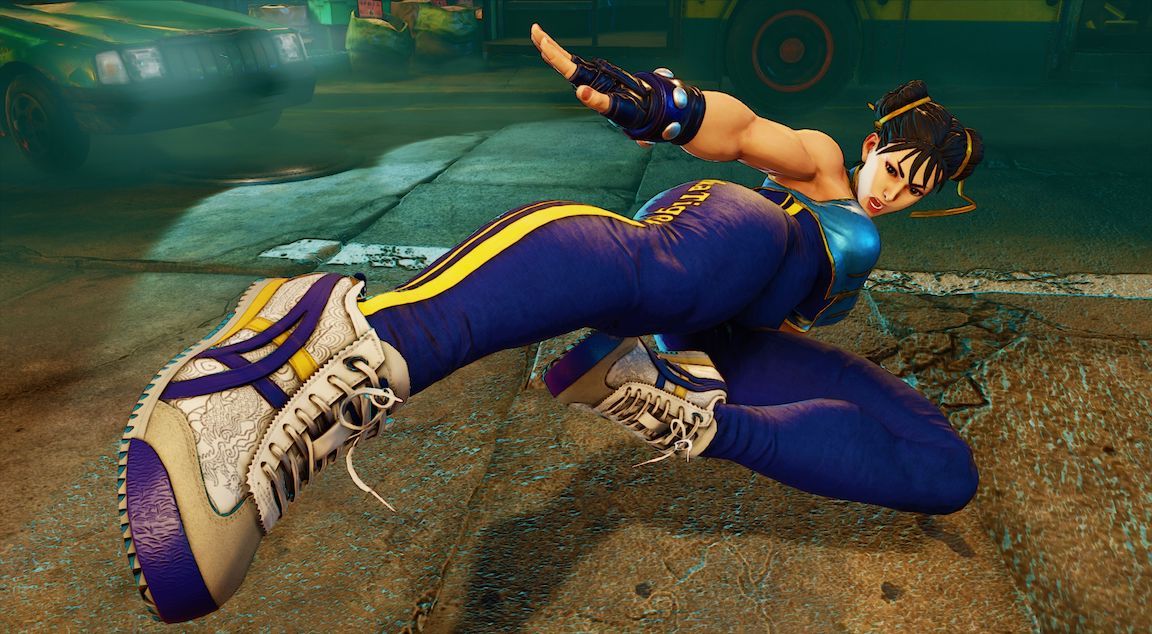
The Art of Chun-Li: ONITSUKA TIGER meets Street Fighter V
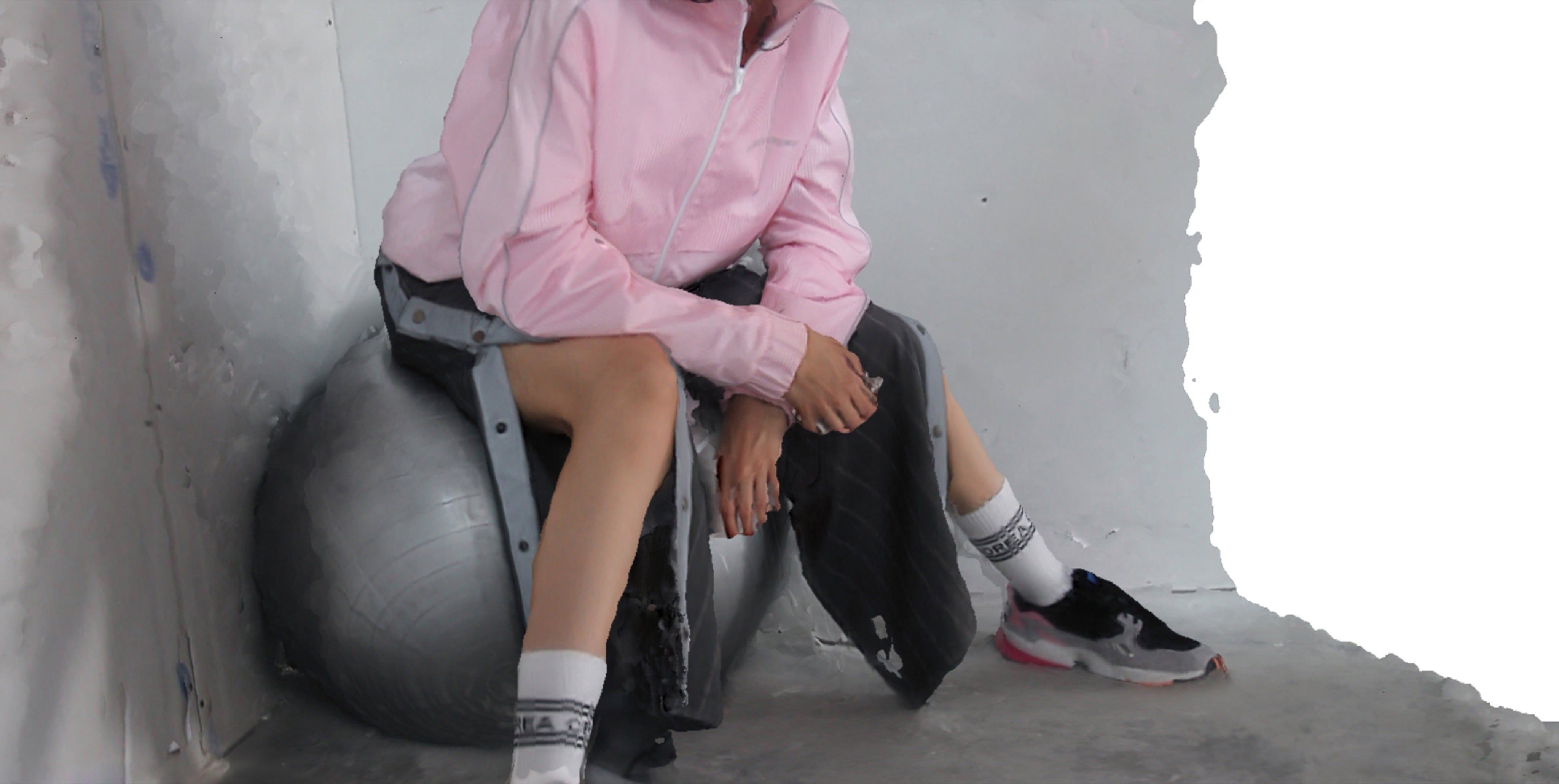
Andrea Crews Experiments with Full Digital Assimilation for SS19
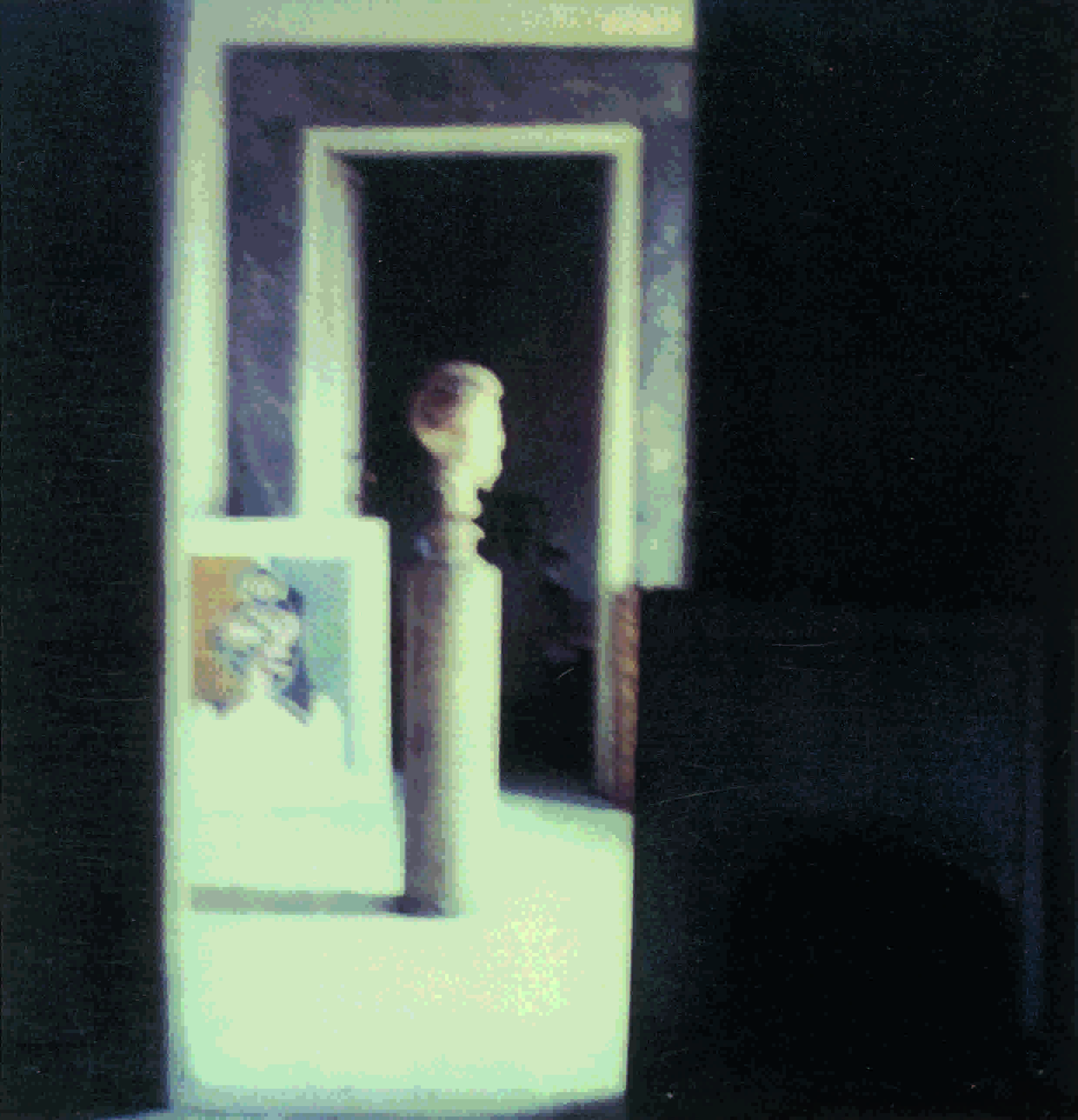
CY TWOMBLY’S PHOTOGRAPHS are Weightless Still-Lifes
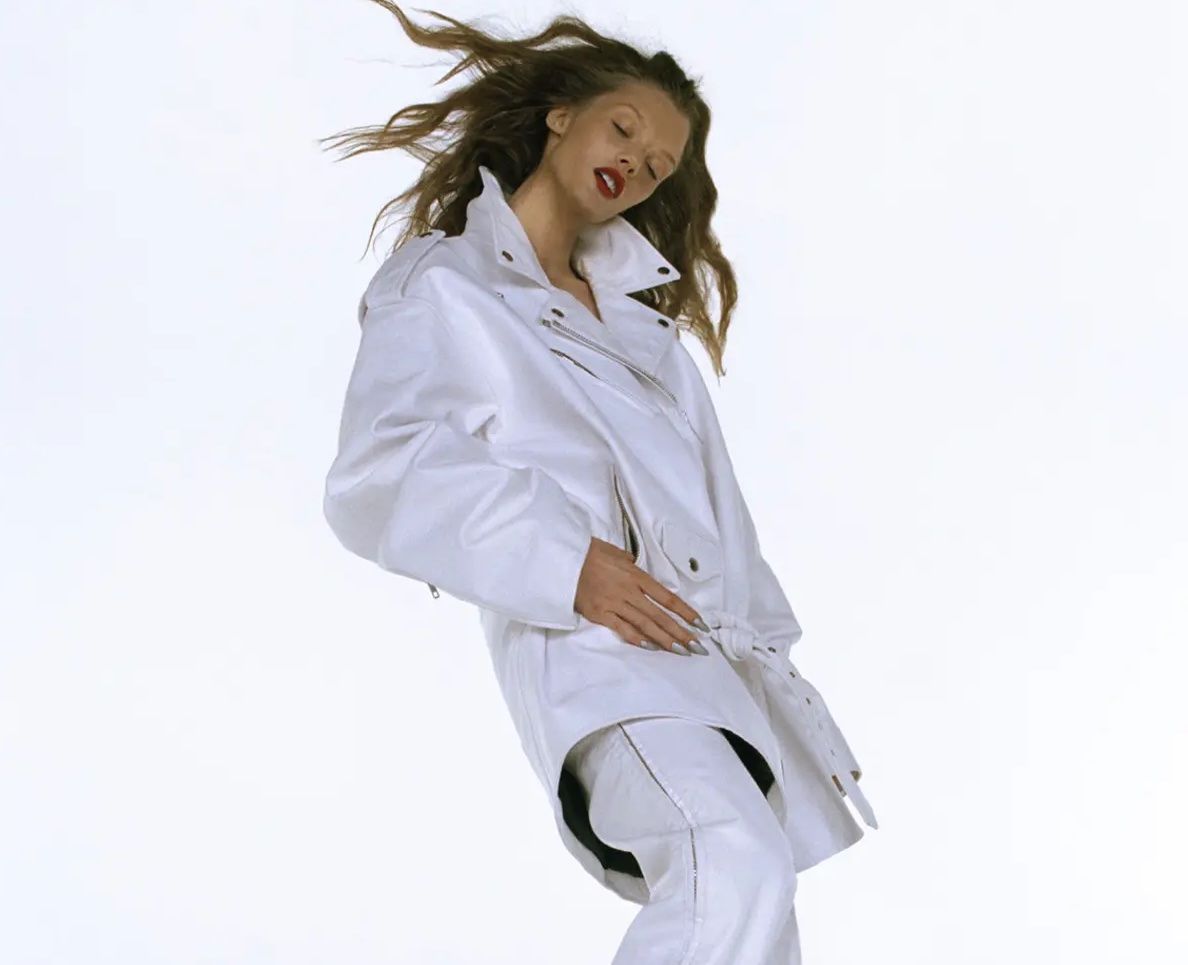
Archetypes, Atmosphere, Attitude: HUGO COMTE Shoots KRIS GRIKAITE for 032c